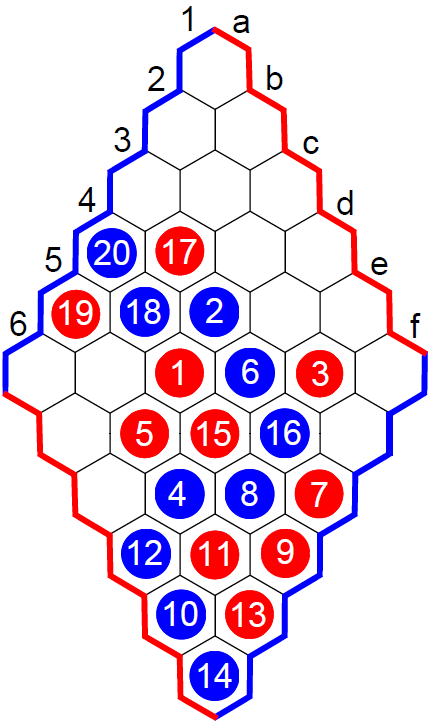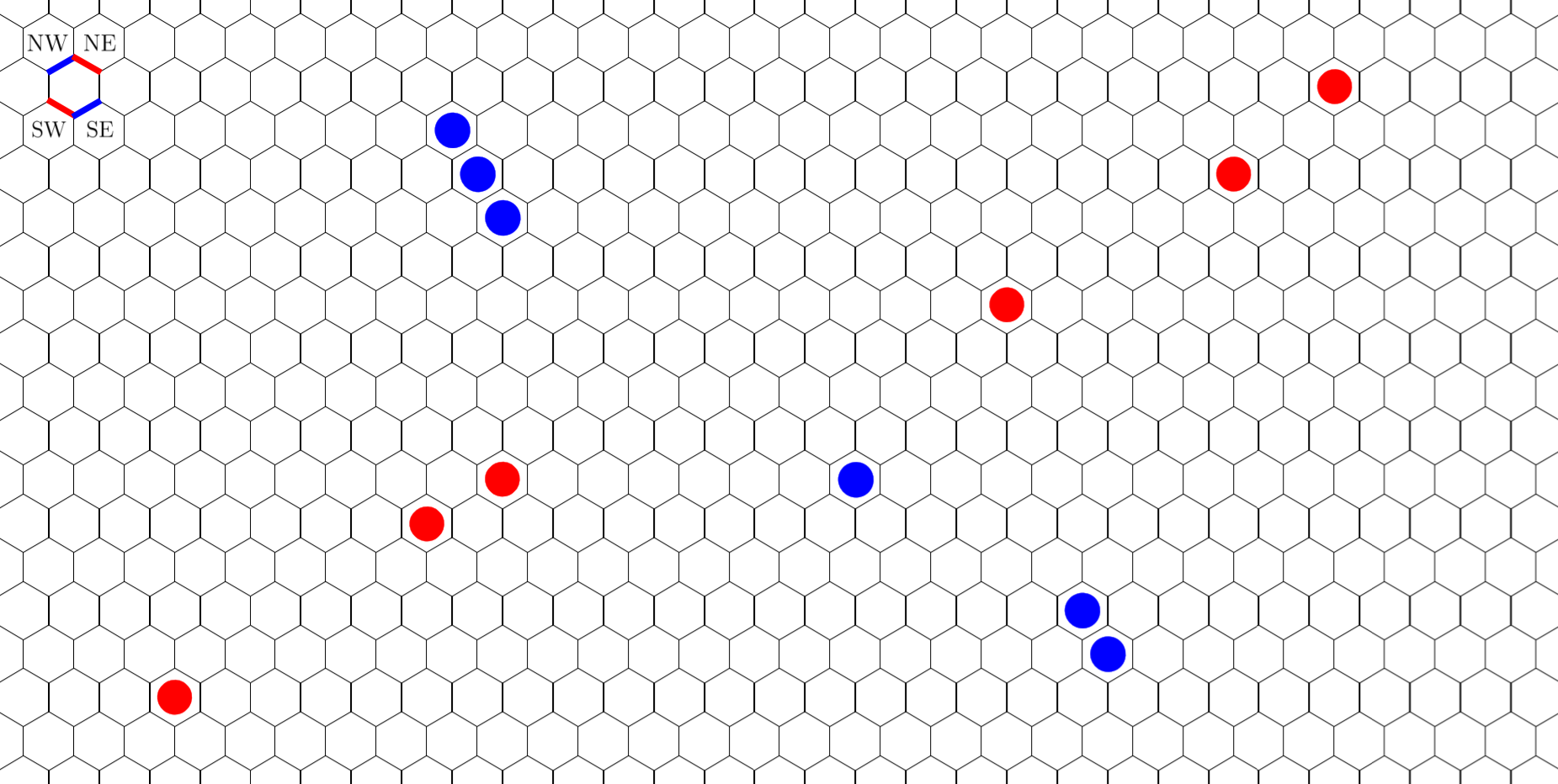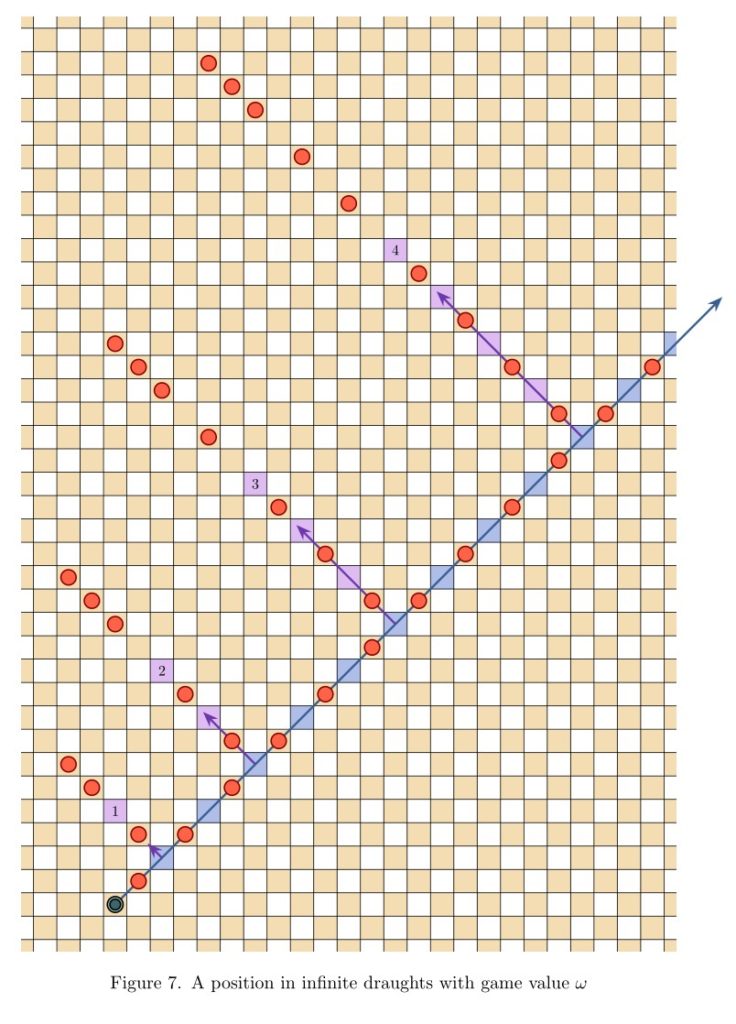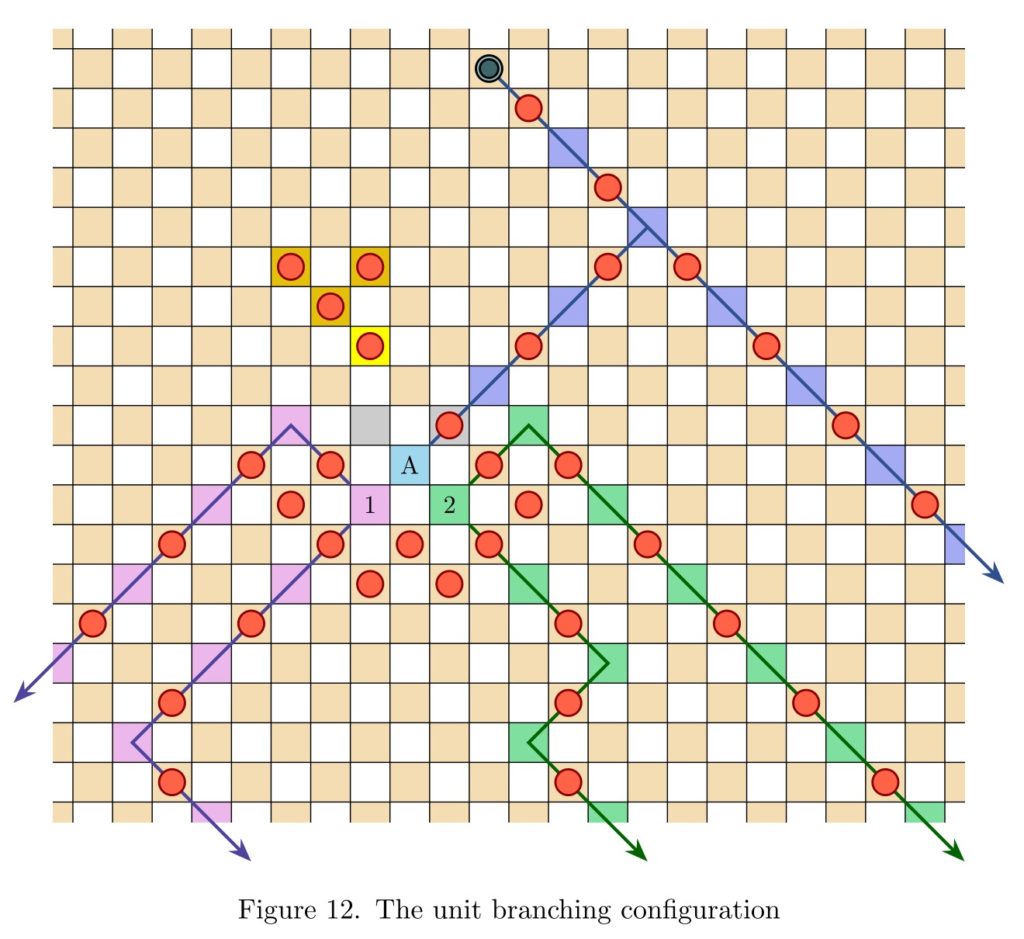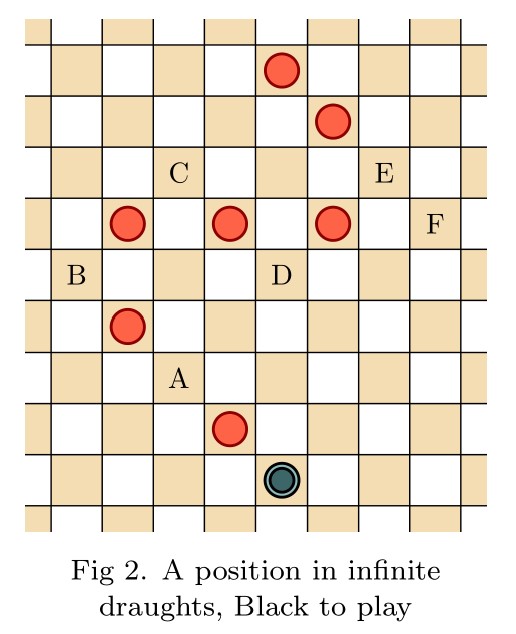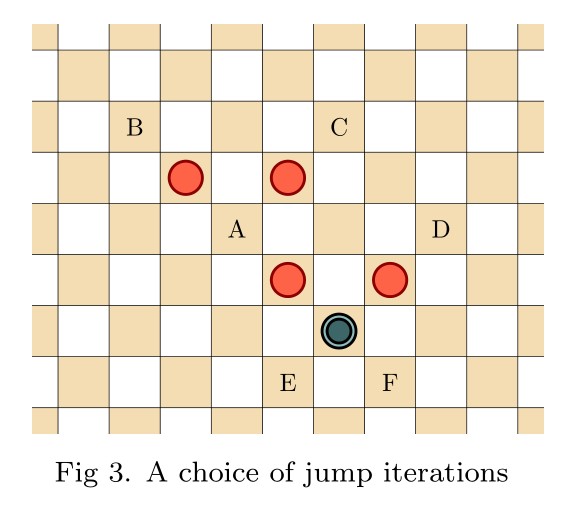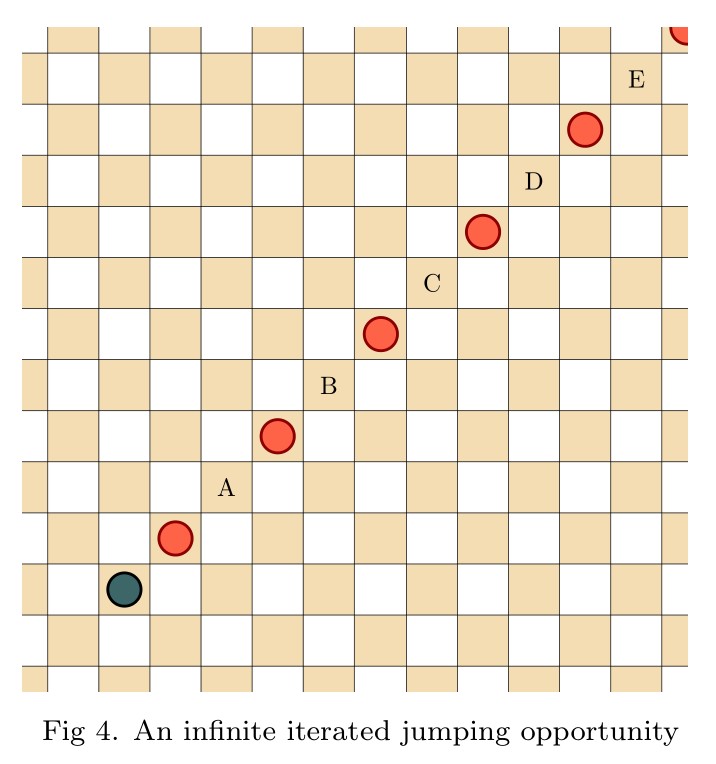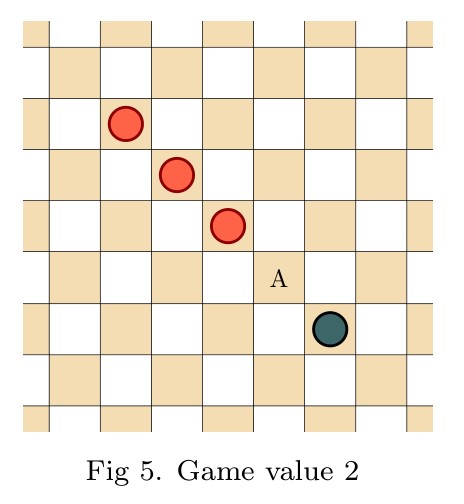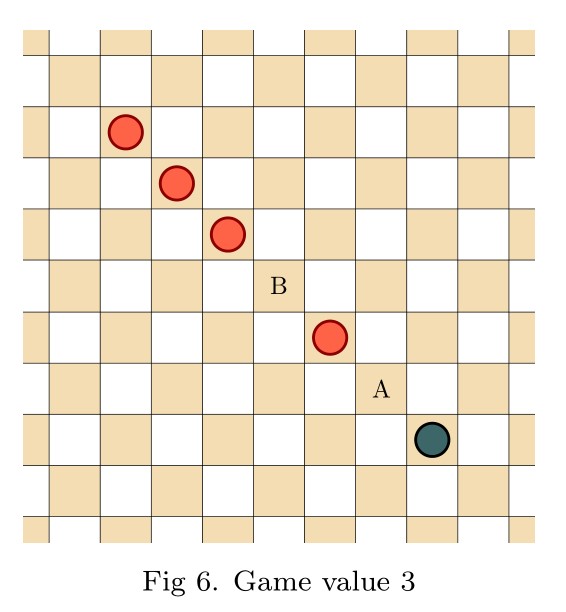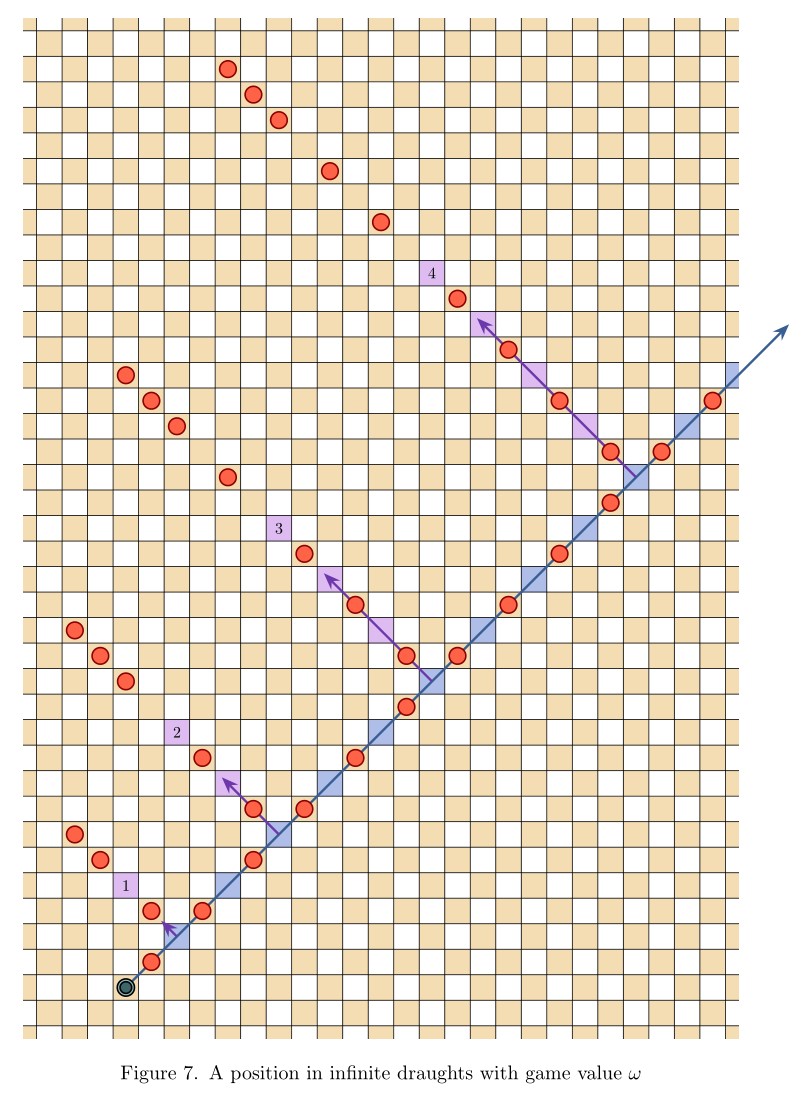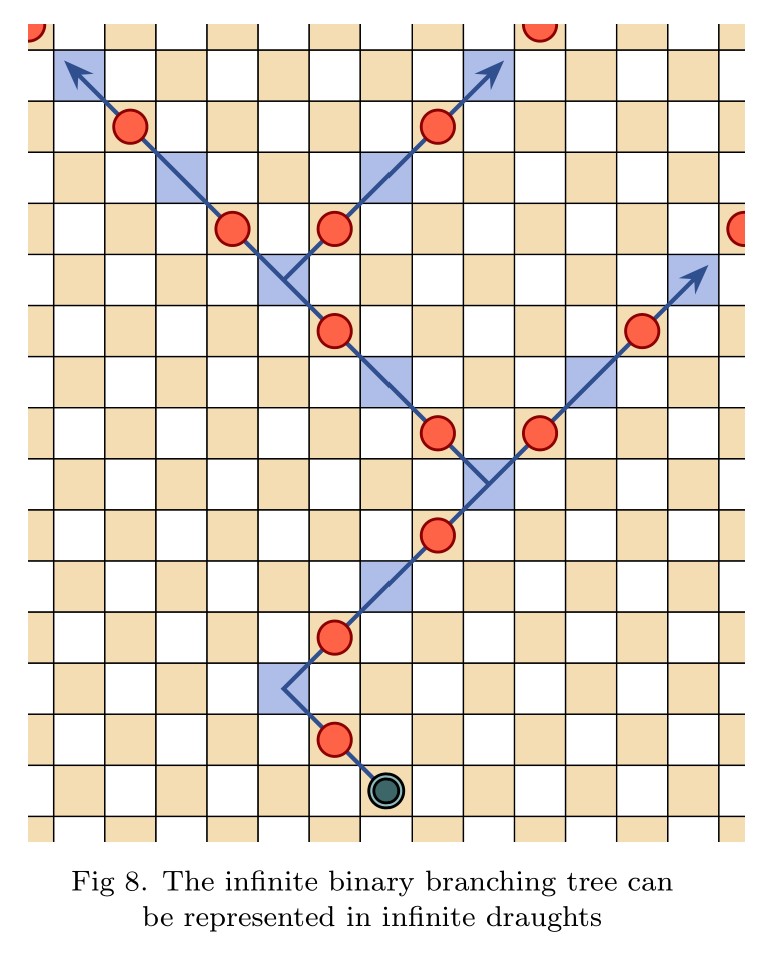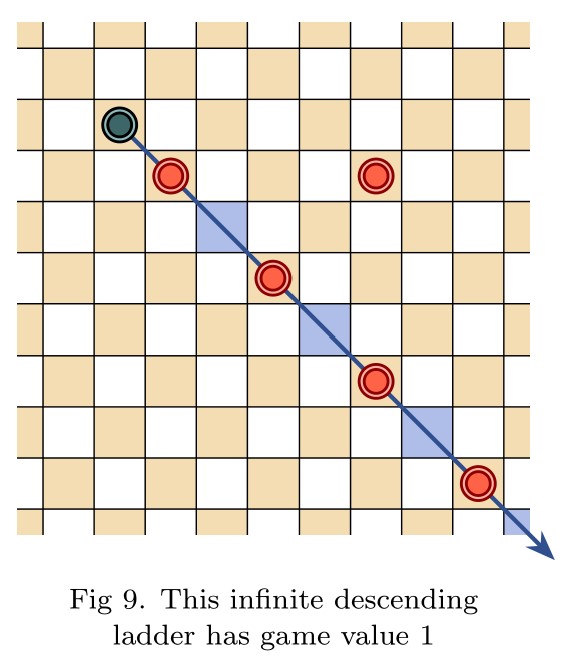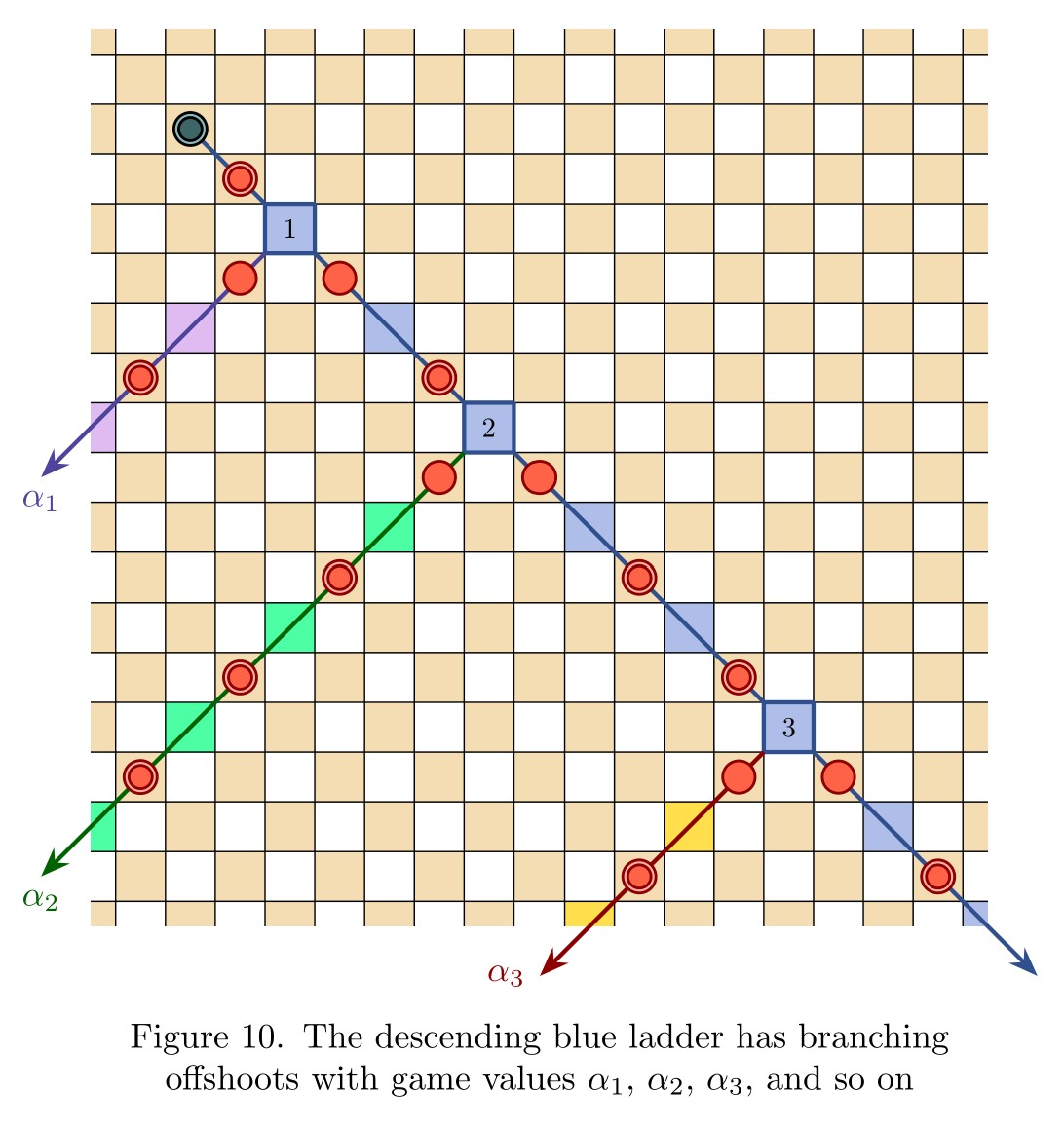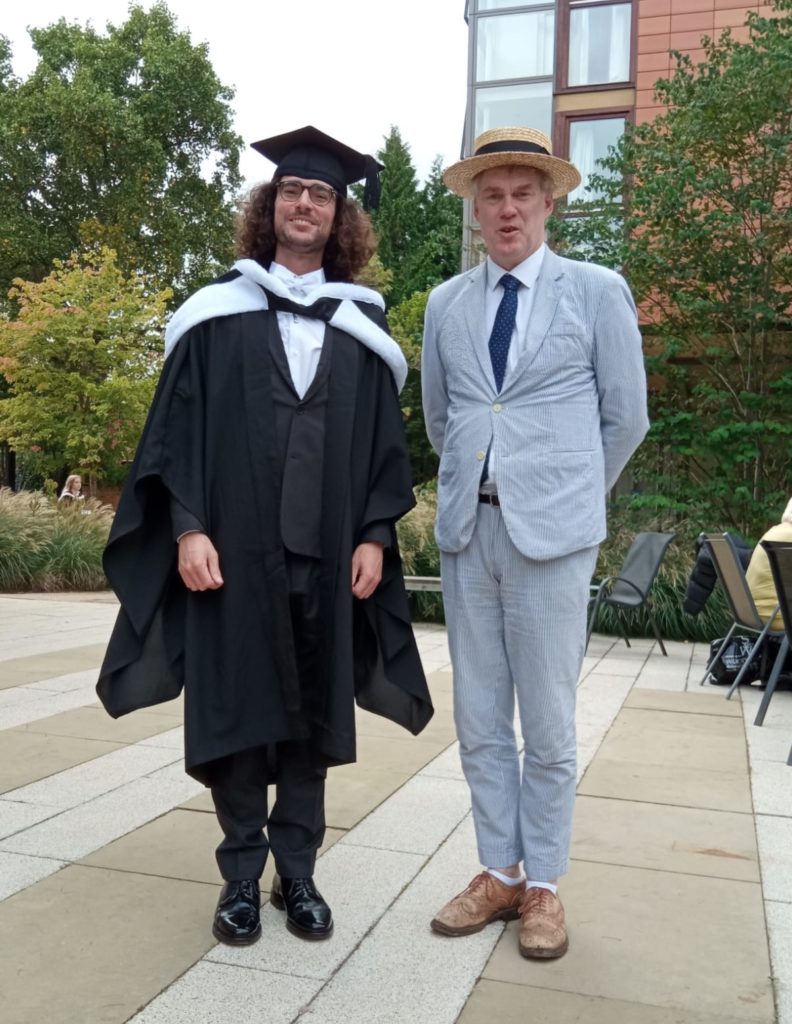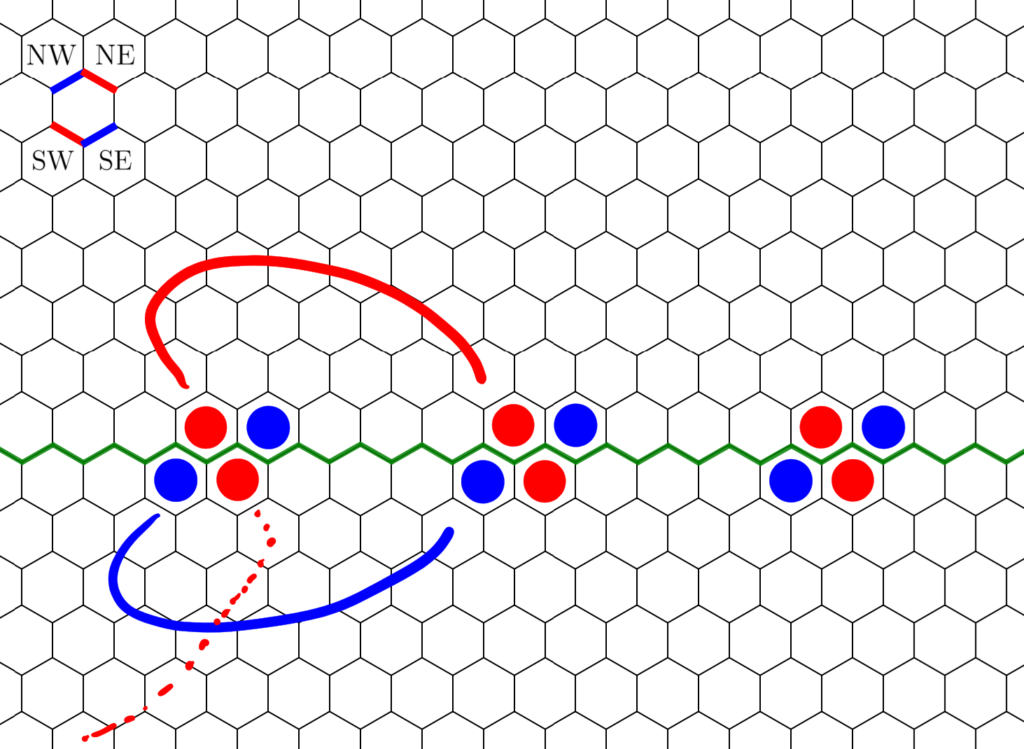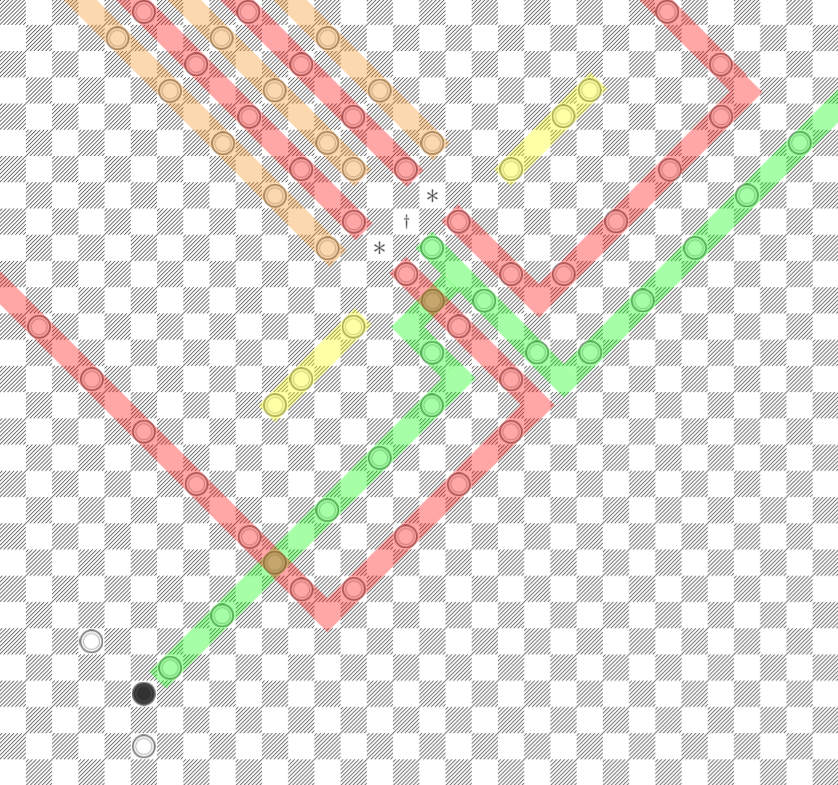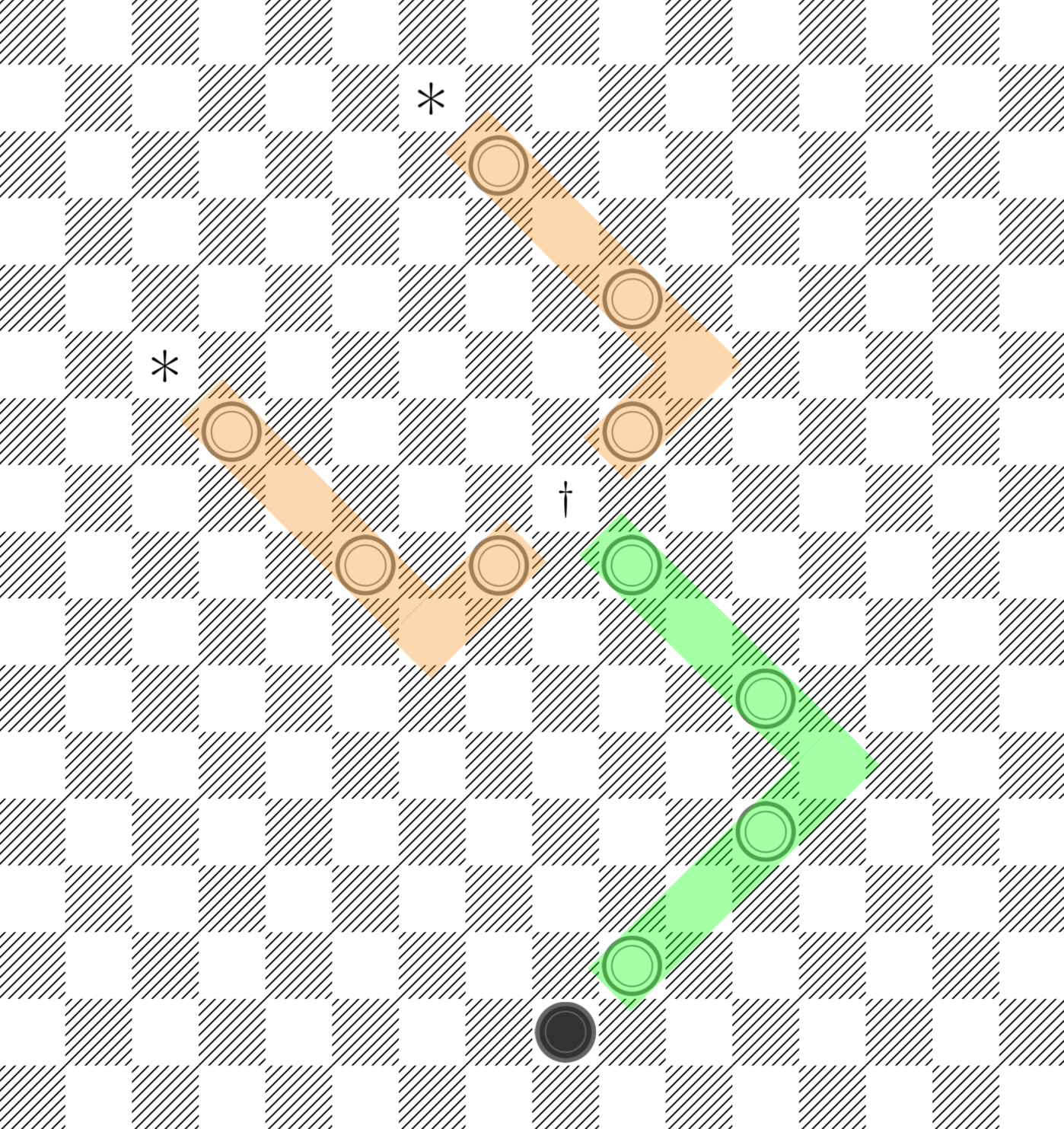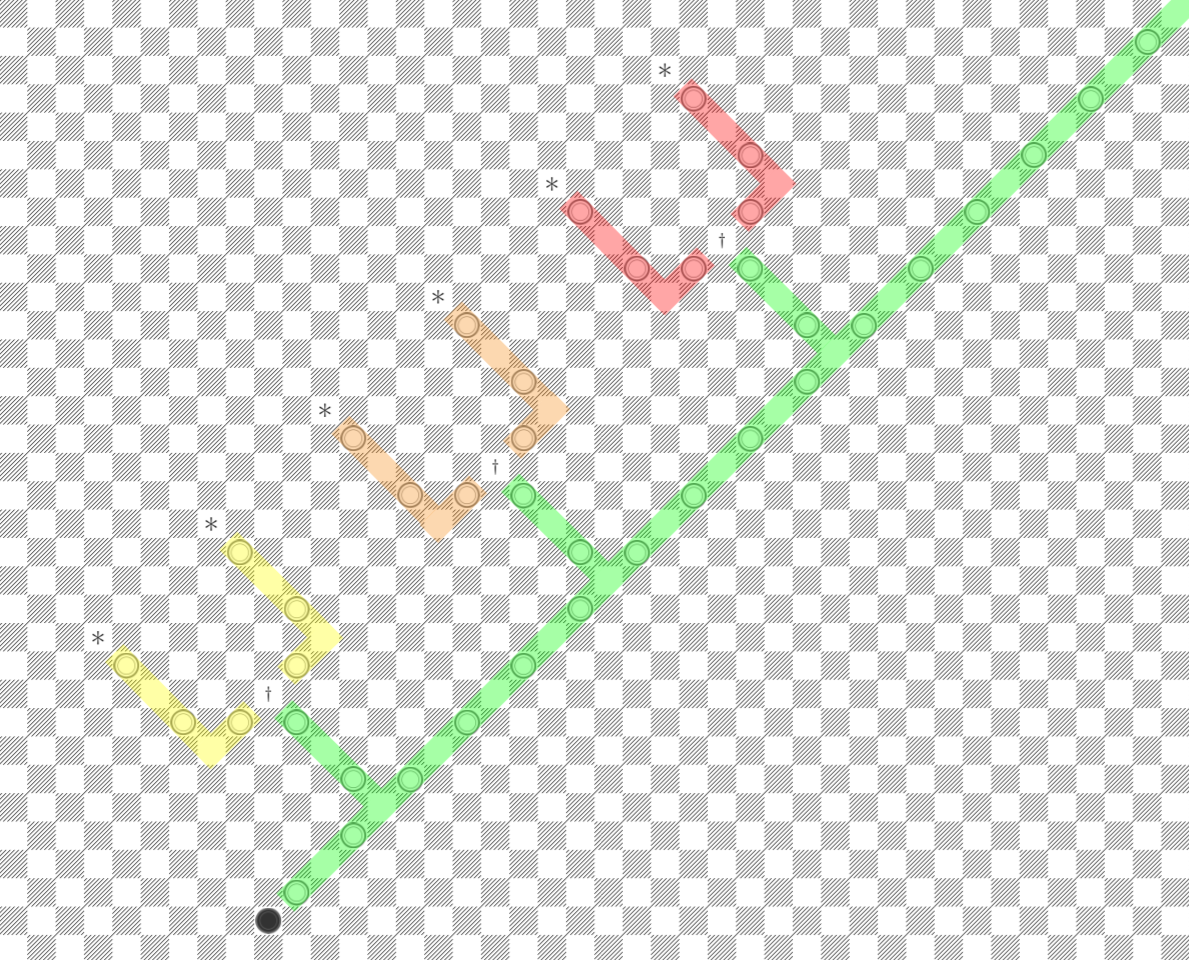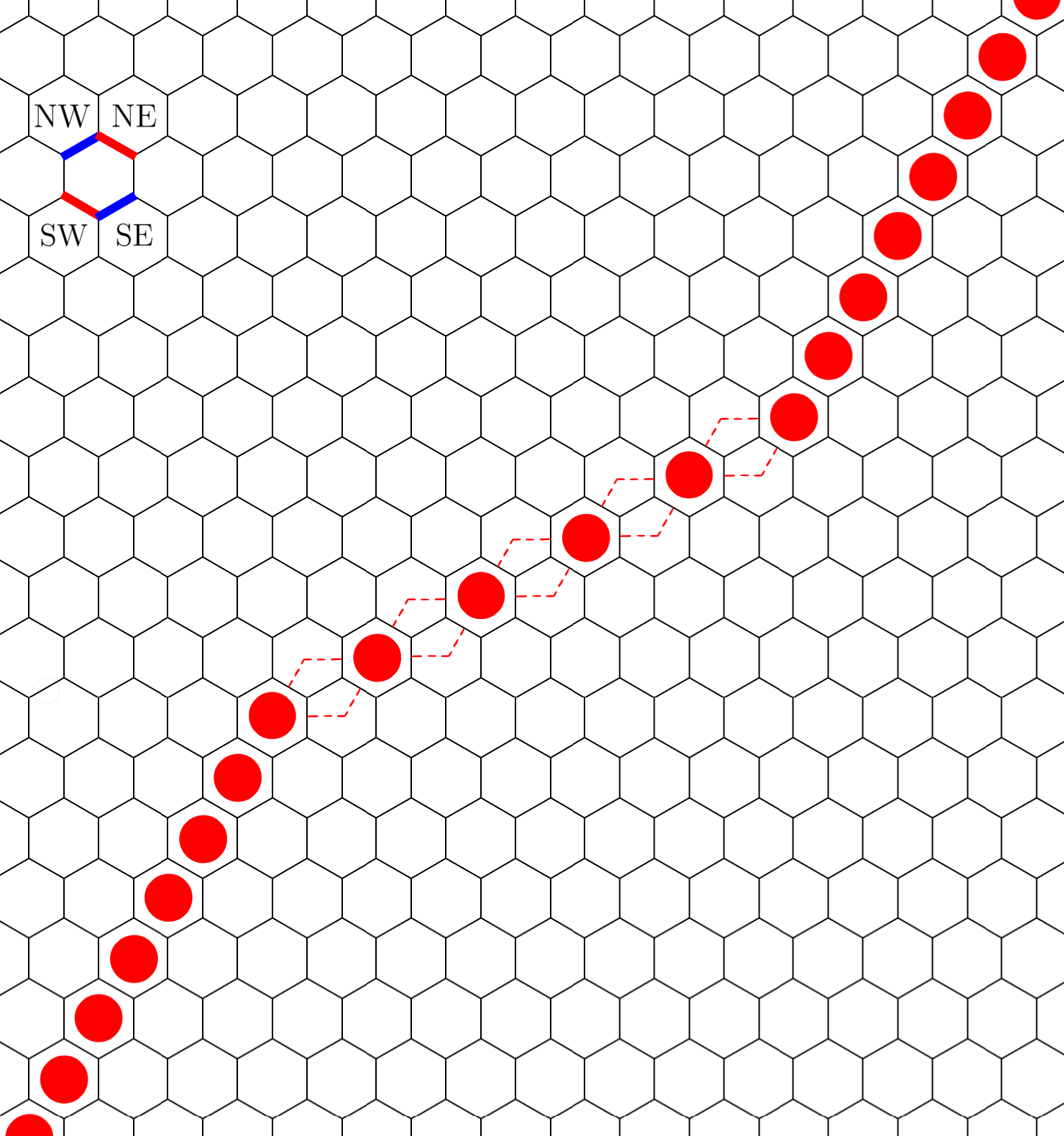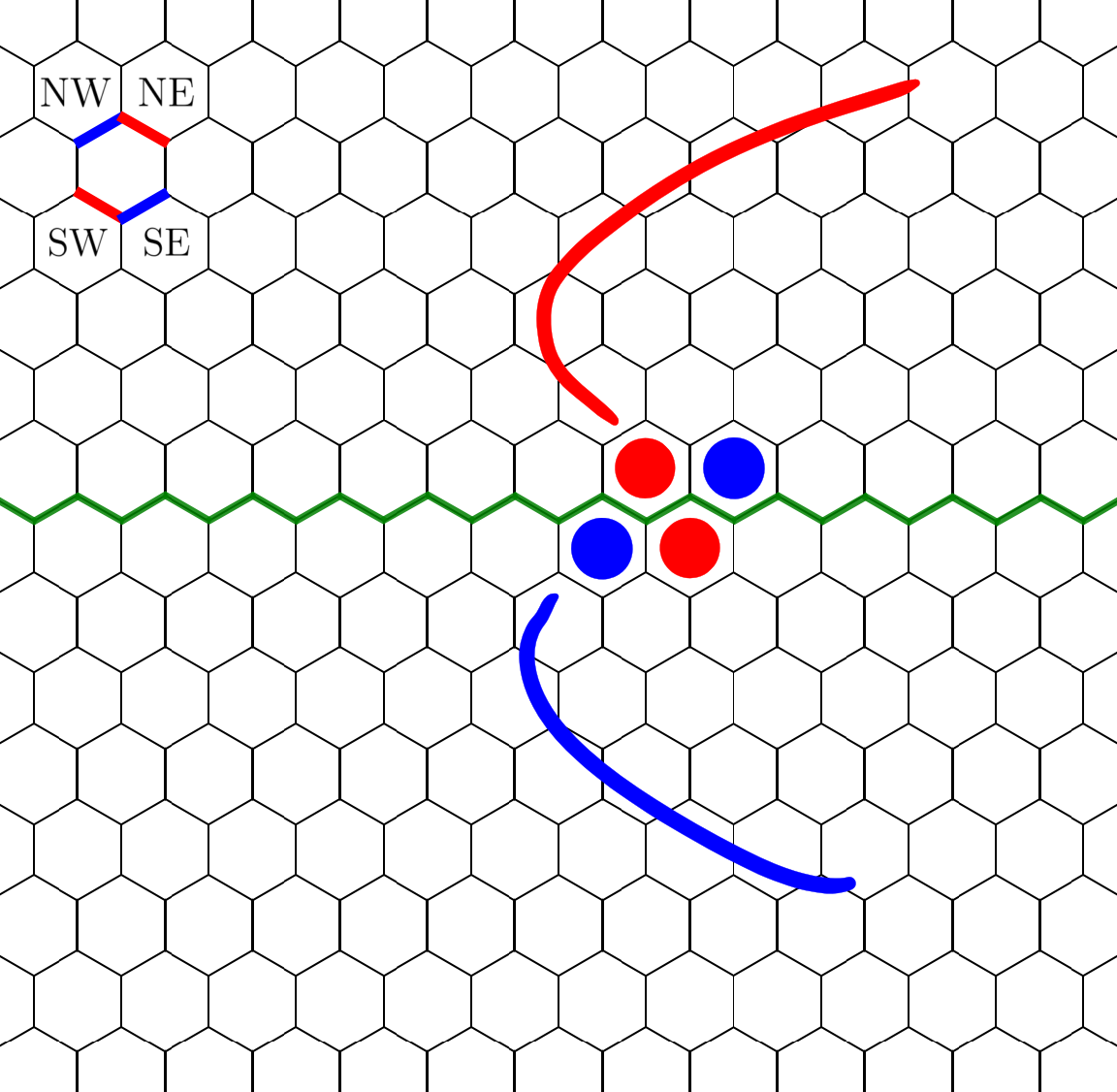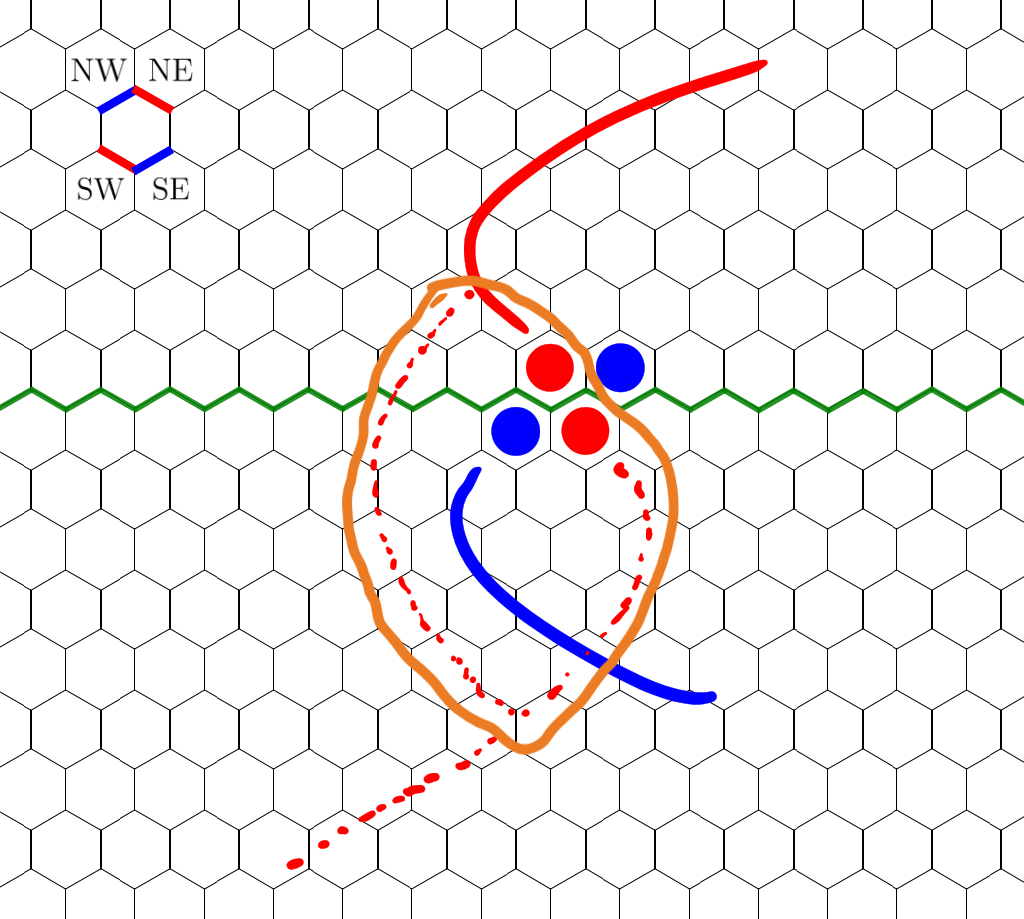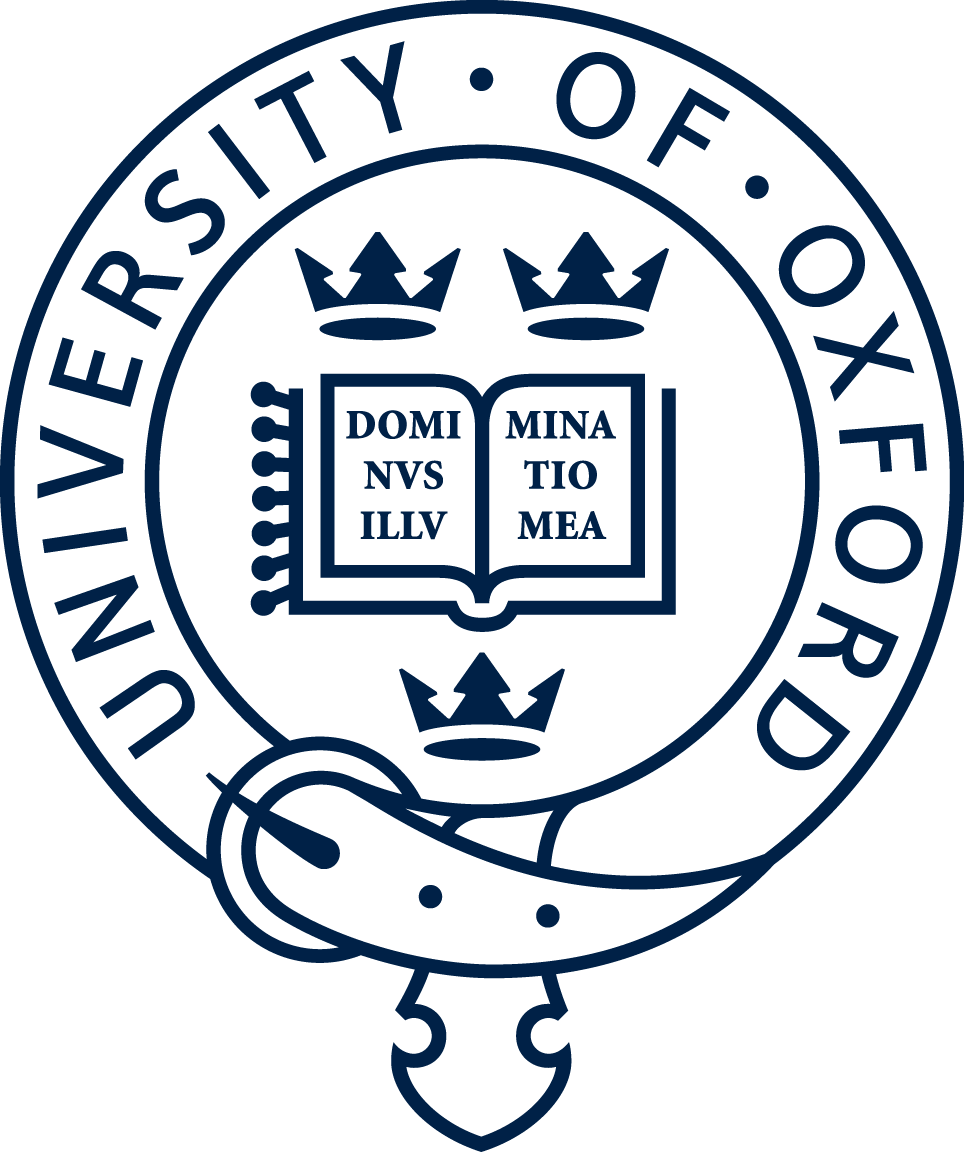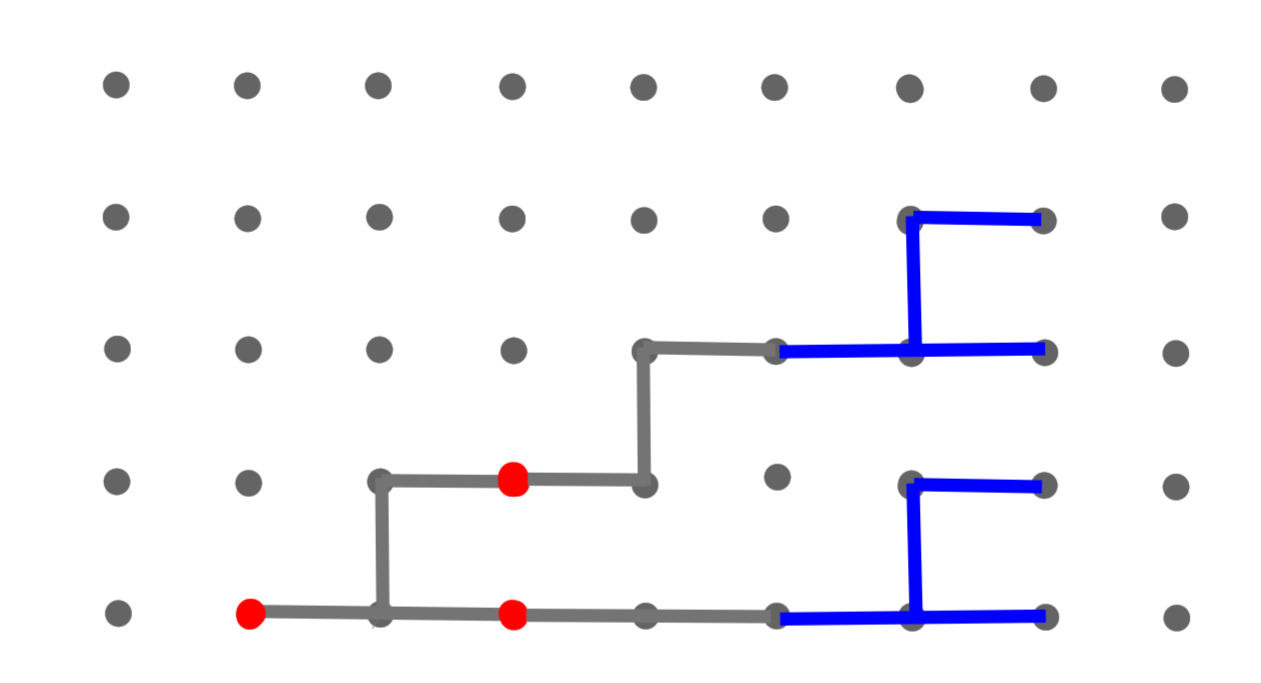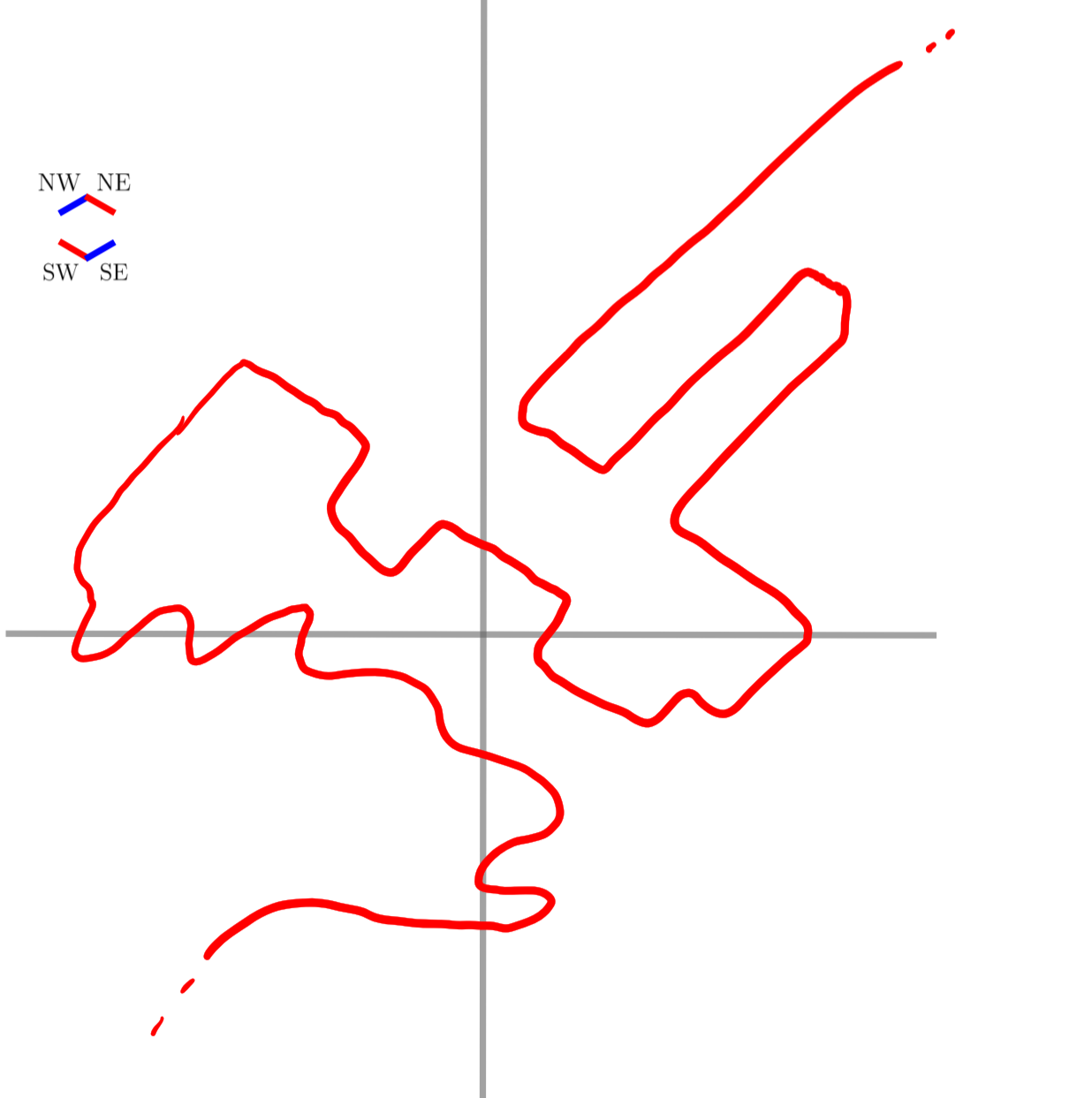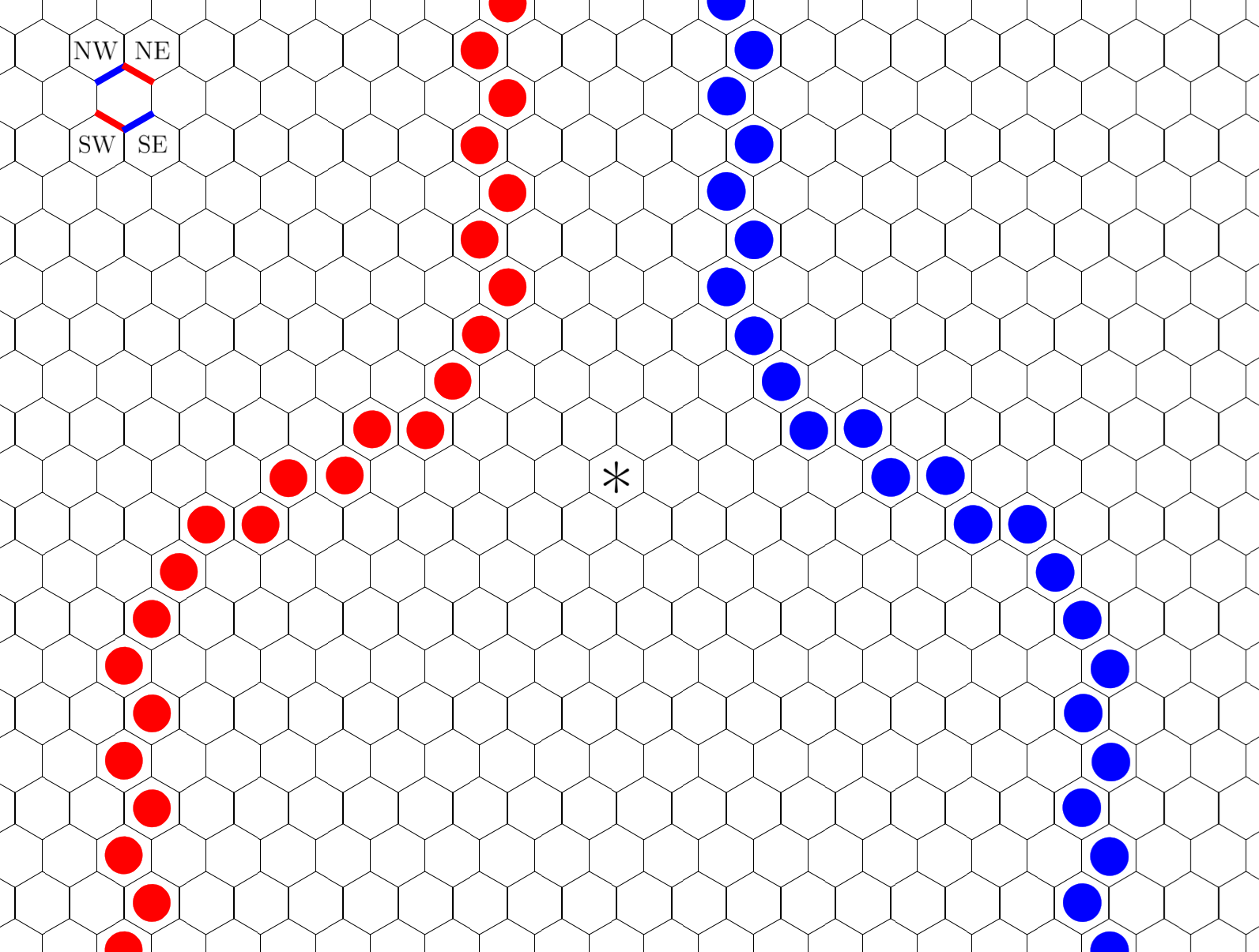[bibtex key=”HamkinsLeonessi:Infinite-Hex-is-a-draw”]
Download the article at https://arxiv.org/abs/2201.06475.
Abstract. We introduce the game of infinite Hex, extending the familiar finite game to natural play on the infinite hexagonal lattice. Whereas the finite game is a win for the first player, we prove in contrast that infinite Hex is a draw—both players have drawing strategies. Meanwhile, the transfinite game-value phenomenon, now abundantly exhibited in infinite chess and infinite draughts, regrettably does not arise in infinite Hex; only finite game values occur. Indeed, every game-valued position in infinite Hex is intrinsically local, meaning that winning play depends only on a fixed finite region of the board. This latter fact is proved under very general hypotheses, establishing the conclusion for all simple stone-placing games.
This is my second joint project with Davide Leonessi, the first being our work on Transfinite games values in infinite draughts, both projects growing out of his work on his MSc in MFoCS at Oxford, for which he earned a distinction in September 2021.
Here is a convenient online Hex player, for those who want to improve their game: http://www.lutanho.net/play/hex.html.

